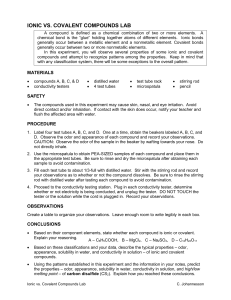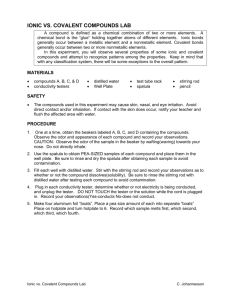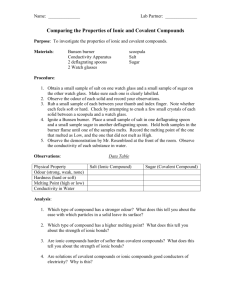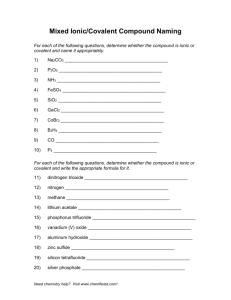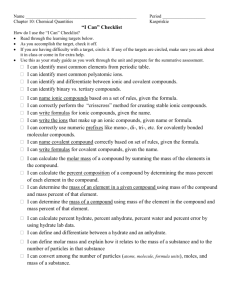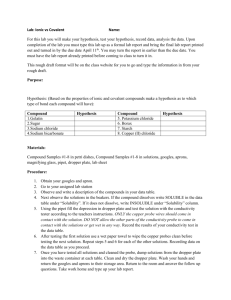In this experiment, you will observe several properties of
advertisement
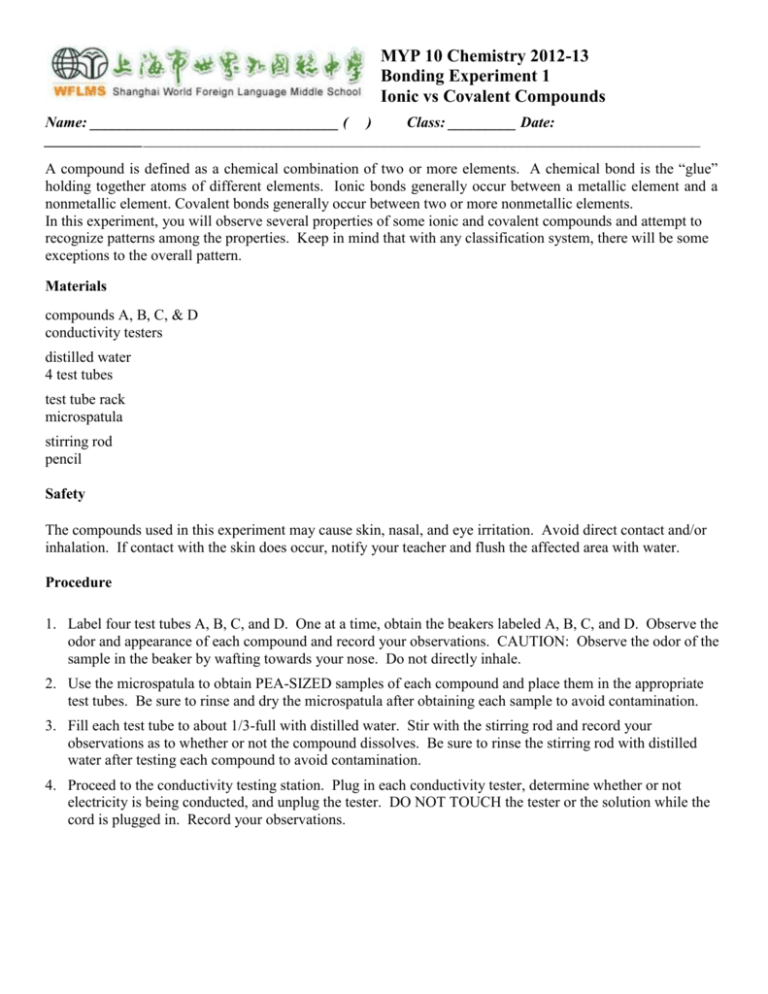
MYP 10 Chemistry 2012-13 Bonding Experiment 1 Ionic vs Covalent Compounds Name: _________________________________ ( ) Class: _________ Date: _______________________________________________________________________________________ A compound is defined as a chemical combination of two or more elements. A chemical bond is the “glue” holding together atoms of different elements. Ionic bonds generally occur between a metallic element and a nonmetallic element. Covalent bonds generally occur between two or more nonmetallic elements. In this experiment, you will observe several properties of some ionic and covalent compounds and attempt to recognize patterns among the properties. Keep in mind that with any classification system, there will be some exceptions to the overall pattern. Materials compounds A, B, C, & D conductivity testers distilled water 4 test tubes test tube rack microspatula stirring rod pencil Safety The compounds used in this experiment may cause skin, nasal, and eye irritation. Avoid direct contact and/or inhalation. If contact with the skin does occur, notify your teacher and flush the affected area with water. Procedure 1. Label four test tubes A, B, C, and D. One at a time, obtain the beakers labeled A, B, C, and D. Observe the odor and appearance of each compound and record your observations. CAUTION: Observe the odor of the sample in the beaker by wafting towards your nose. Do not directly inhale. 2. Use the microspatula to obtain PEA-SIZED samples of each compound and place them in the appropriate test tubes. Be sure to rinse and dry the microspatula after obtaining each sample to avoid contamination. 3. Fill each test tube to about 1/3-full with distilled water. Stir with the stirring rod and record your observations as to whether or not the compound dissolves. Be sure to rinse the stirring rod with distilled water after testing each compound to avoid contamination. 4. Proceed to the conductivity testing station. Plug in each conductivity tester, determine whether or not electricity is being conducted, and unplug the tester. DO NOT TOUCH the tester or the solution while the cord is plugged in. Record your observations. Observations Create a table to organize your observations. Leave enough room to write legibly in each box. Conclusions Based on their component elements, state whether each compound is ionic or covalent. Explain your reasoning. A – C6H5COOH, B – MgCl2, C – Na2SO4, D – C12H22O11 Based on these classifications and your data, describe the typical properties – odor, appearance, solubility in water, and conductivity in solution – of ionic and covalent compounds. Using the patterns established in this experiment and the information in your notes, predict the properties – odor, appearance, solubility in water, conductivity in solution, and high/low melting point – of carbon disulfide (CS2). Explain how you reached these conclusions. Assessment This practical could be assessed formally for Data collection and processing (DCP), Conclusion and evaluation (CE) and Manipulative skills (MS). If it is, then the section on ‘Calculations’ should be removed.
